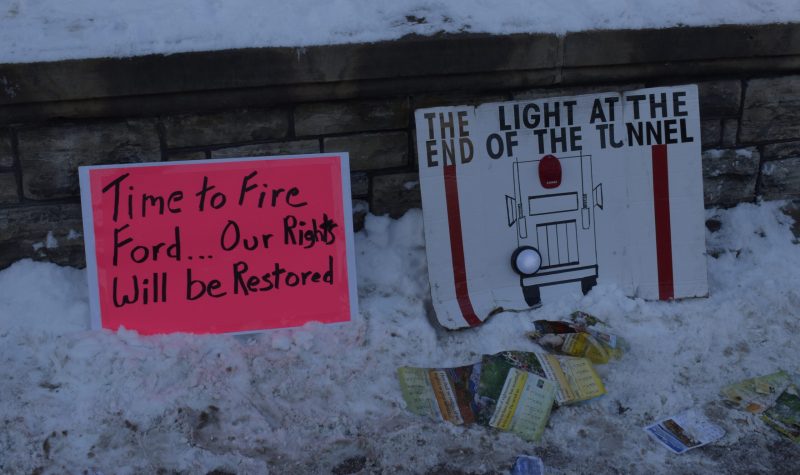The Ottawa Police Service is bracing for a fourth weekend of protests in the downtown core, saying they are now well-equipped to end the occupation.
Ottawa police has struggled to handle the influx of thousands of demonstrators flooding the downtown core beginning in late January. In the following weeks, police managed to oversee the departure of many of the protesters, reinforced by police from multiple other jurisdictions, including OPP and RCMP.
In a special meeting of city council on Wednesday afternoon, deputy police chief Steve Bell reported that the police service now has “all the resources it needs” to remove the remaining protesters downtown.
“We've been able to get the resource requests that we've been asking for and we're able to pull together the resources that we need to successfully and safely and the occupation,” says Bell.
Bell told council on Wednesday that he was unable to publicly share details of the plan to end the occupation, but called the approach “methodical and well resourced.”
Amidst heavy criticism from residents and city officials for his mishandling of the occupation, former Police Chief Peter Sloly resigned on Tuesday. Bell was subsequently named as interim police chief, and is now leading the operation in the downtown core.
When pressed by councillors on whether he supported the strategy created by his predecessor, Bell defended the police service’s commitment.
“I am absolutely invested to work with our partners to end this occupation,” says Bell. “Know that I represent that on behalf of every member of our police service who is invested in ending this occupation.”
The presence of children in the “red zone” of the occupation—the main area where demonstrations are occurring downtown—has presented challenges for police, according to Bell. He says police continue working with Children’s Aid Society and other child and youth welfare agencies to remove children from the red zone before the remainder of the convoy is forcibly dismantled. Additionally, demonstrators bringing minors into the red zone could be fined up to 5,000 dollars in accordance with new temporary legislation under the Emergency Measures Act.
The Ottawa Police Services Board (OPSB) saw turnover following Sloly's resignation. A motion to replace Coun. Diane Deans as chair of the OPSB was passed on Wednesday after it was alleged that she had circumvented the official hiring process to select an interim chief. Ottawa’s first and only Black councillor, Rideau-Rockcliffe Ward’s Rawlson King, tendered his resignation from the OPSB on Wednesday, along with Coun. Carol-Ann Meehan and member Sandy Smallwood. King cited Deans’ dismissal as the reason for his resignation.
“Under her leadership of the board, she committed to doing things differently, and undertook exploring more innovative and progressive approaches to community safety and wellbeing to produce better outcomes for everyone residing in the City of Ottawa,” says King.
A reformed OPSB met on Thursday, with Coun. Eli El-Chantiry replacing Deans as chair. Kitchissippi Ward Coun. Jeff Leiper took King’s seat on the board and resident Suzanne Valiquet replaced Smallwood.
Bell delivered an update to the board on Thursday, cautioning residents to only approach occupied areas for essential reasons.
“Only those with lawful reasons to enter the core such as residents, businesses, and others with lawful reasons will be allowed into that area,” says Bell.
He indicated that unlawful protesters would be given the option to leave, but that “there will be consequences” for those who remain. Demonstrators who refuse to leave could face arrests, seizure of vehicles, the restriction of their personal or business bank accounts, and several other charges.
Bell added that the police have “appropriate and lawful” methods of removing demonstrators who refuse to leave.
Listen to the CHUO story below:


